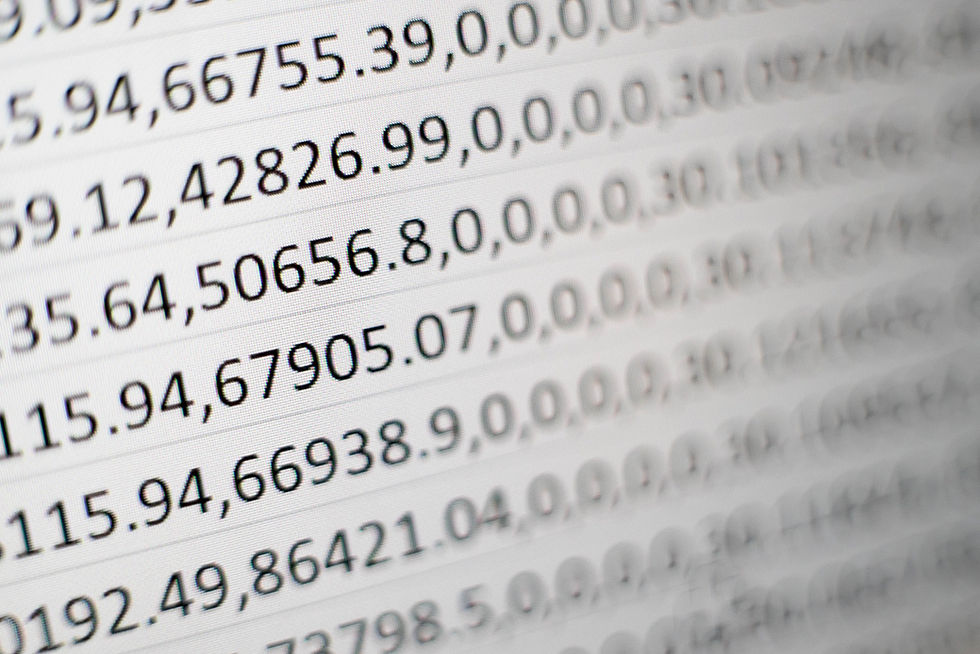Seeing Around Corners: The Power of Predictive Analytics
- Melanie Hartlove
- Apr 11
- 3 min read
Updated: May 20

It's Not About Crystal Balls...
Predictive analytics sounds like something out of a sci-fi movie—technology that can forecast what’s going to happen before it does. But in reality, it’s a very grounded, practical tool that’s already embedded in the way modern organizations operate. At its core, predictive analytics helps identify patterns in historical data to forecast future events or trends. It's not about perfect prediction—it's about gaining a better sense of what might happen next, so you can make smarter, more informed decisions today.
Here’s a look at where predictive analytics shows up, sometimes behind the scenes, driving real value across different sectors.
Operations: Forecasting Demand and Optimizing Resources
In logistics, manufacturing, and supply chain operations, timing is everything. Predictive analytics allows organizations to anticipate future demand by analyzing seasonal trends, customer behavior, and market conditions. This leads to better inventory management, reduced waste, and fewer stockouts or overages.
For example, a distribution center might use predictive models to forecast which products will be in highest demand during the summer season, adjusting orders and staffing accordingly. Airlines and transit systems use it to project ridership and optimize schedules. Even utility companies rely on it to anticipate energy demand during extreme weather patterns.
Healthcare: Anticipating Patient Needs and Improving Outcomes
In healthcare, predictive analytics is particularly powerful because timely intervention can change outcomes. Hospitals use it to anticipate patient admissions, predict readmission risks, and identify individuals who may be at risk for chronic disease flare-ups or complications.
For instance, by analyzing patterns in medical history, lab results, and appointment data, a system might flag patients who are statistically more likely to need surgical intervention within the next year. This insight allows care teams to intervene earlier, allocate resources effectively, and improve overall patient outcomes.
Finance: Managing Risk and Improving Forecast Accuracy
Financial institutions use predictive analytics extensively to assess credit risk, detect fraud, and forecast market trends. By processing large amounts of transaction data, banks can identify unusual behavior that might indicate fraud, or use customer data to estimate the likelihood of loan default.
It’s also used in budgeting and investment forecasting—giving decision-makers a stronger basis for projecting future cash flows or evaluating scenarios in volatile markets. In this space, analytics is less about guesswork and more about scenario planning with real data behind it.
Education: Supporting Student Success
In the education sector, predictive analytics can help identify students who may need additional support before they fall too far behind. By tracking attendance, grades, engagement metrics, and other factors, institutions can spot early signs of academic risk.
Colleges and universities are also using predictive models to forecast enrollment trends and retention rates—helping them tailor programs, resources, and outreach strategies to meet student needs more effectively.
Public Safety: Anticipating Risk and Allocating Resources
City governments and emergency services are applying predictive analytics to improve community safety. By analyzing crime patterns, emergency response data, and geographic trends, agencies can deploy resources more efficiently and plan proactive interventions.
For instance, if historical data shows a spike in certain incidents during holiday weekends, departments can adjust staffing or outreach programs accordingly. In natural disaster response, predictive modeling helps identify high-risk zones based on weather forecasts and past impact patterns.
Retail: Personalizing Customer Experiences
Retailers use predictive analytics to understand buying behavior, personalize marketing, and manage supply chains. If you've ever received a product recommendation that seemed eerily well-timed, chances are predictive models were at play.
Beyond marketing, predictive tools help retailers know when to restock shelves, launch promotions, or introduce new products. The goal isn’t just efficiency—it’s relevance. Meeting customer needs before they even articulate them is now part of the competitive landscape.
Human Resources: Forecasting Workforce Needs
HR departments are leveraging predictive analytics to anticipate turnover, assess hiring needs, and even evaluate the potential success of a new hire. By examining trends in employee engagement, performance, and tenure, organizations can spot patterns that indicate which teams might face staffing shortages or where retention efforts need to be focused.
This doesn’t mean reducing people to numbers—it’s about supporting better workforce planning and ensuring that teams are set up for long-term success.
Predictive analytics doesn’t guarantee certainty—but it offers clarity. The goal isn’t to be 100% right about the future; it’s to be better informed and better prepared. Whether you're managing assets, helping patients, serving customers, or making strategic decisions, the ability to anticipate what might come next is increasingly a necessity—not a luxury.
When applied thoughtfully and ethically, predictive analytics becomes a quiet engine behind progress. It enables organizations to shift from reactive to proactive and to serve people more effectively in the process.


